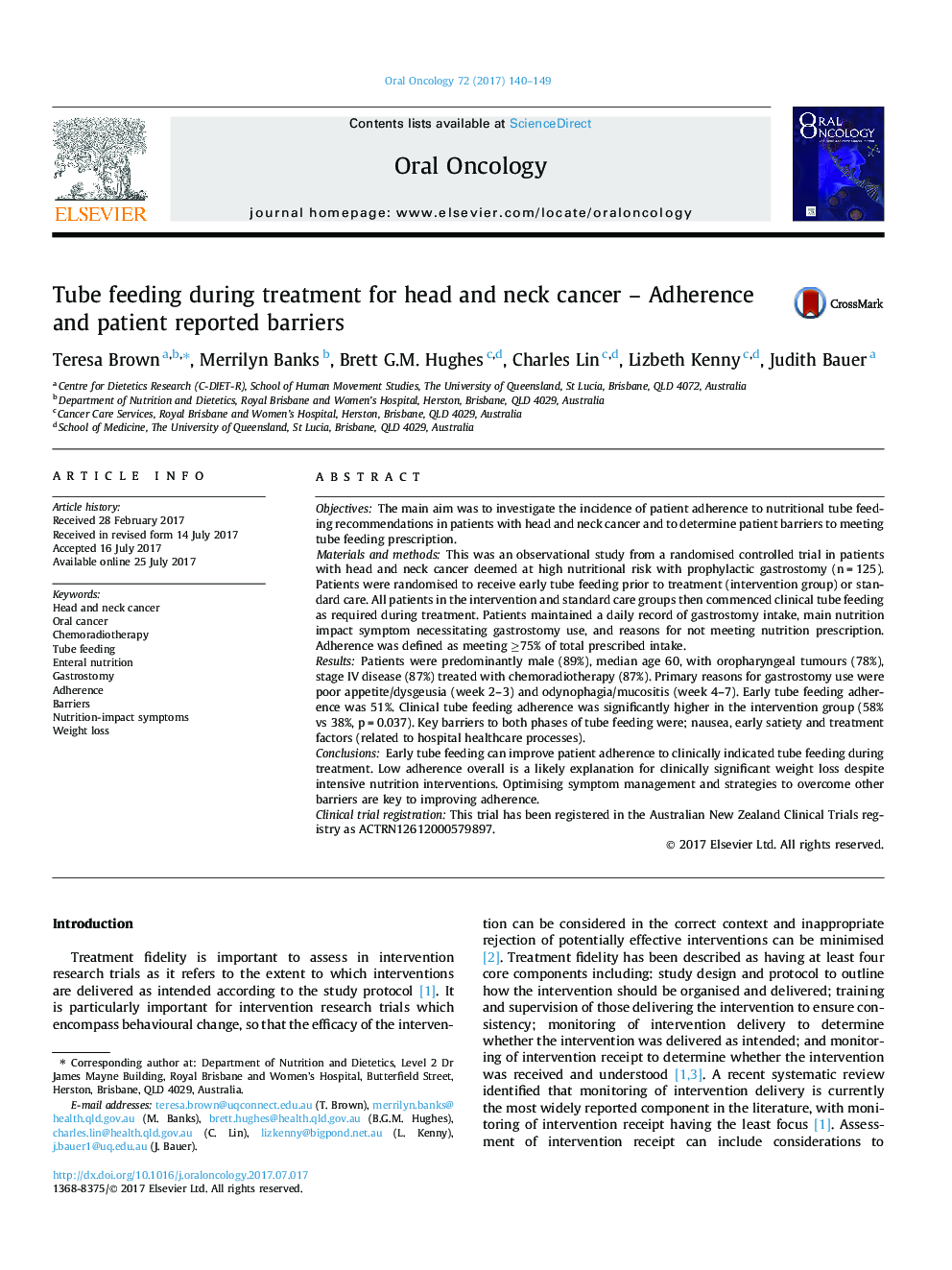| کد مقاله | کد نشریه | سال انتشار | مقاله انگلیسی | نسخه تمام متن |
|---|---|---|---|---|
| 5642595 | 1586238 | 2017 | 10 صفحه PDF | دانلود رایگان |
- Low adherence to tube feeding during treatment is associated with weight loss.
- Key tube feeding barriers included; nausea, vomiting and early satiety.
- Other barriers were the hospital environment and healthcare related processes.
- Multidisciplinary interventions will be required to manage and address barriers.
- Early tube feeding identified as a strategy to improve adherence later in treatment.
ObjectivesThe main aim was to investigate the incidence of patient adherence to nutritional tube feeding recommendations in patients with head and neck cancer and to determine patient barriers to meeting tube feeding prescription.Materials and methodsThis was an observational study from a randomised controlled trial in patients with head and neck cancer deemed at high nutritional risk with prophylactic gastrostomy (n = 125). Patients were randomised to receive early tube feeding prior to treatment (intervention group) or standard care. All patients in the intervention and standard care groups then commenced clinical tube feeding as required during treatment. Patients maintained a daily record of gastrostomy intake, main nutrition impact symptom necessitating gastrostomy use, and reasons for not meeting nutrition prescription. Adherence was defined as meeting â¥75% of total prescribed intake.ResultsPatients were predominantly male (89%), median age 60, with oropharyngeal tumours (78%), stage IV disease (87%) treated with chemoradiotherapy (87%). Primary reasons for gastrostomy use were poor appetite/dysgeusia (week 2-3) and odynophagia/mucositis (week 4-7). Early tube feeding adherence was 51%. Clinical tube feeding adherence was significantly higher in the intervention group (58% vs 38%, p = 0.037). Key barriers to both phases of tube feeding were; nausea, early satiety and treatment factors (related to hospital healthcare processes).ConclusionsEarly tube feeding can improve patient adherence to clinically indicated tube feeding during treatment. Low adherence overall is a likely explanation for clinically significant weight loss despite intensive nutrition interventions. Optimising symptom management and strategies to overcome other barriers are key to improving adherence.Clinical trial registration: This trial has been registered in the Australian New Zealand Clinical Trials registry as ACTRN12612000579897.
Journal: Oral Oncology - Volume 72, September 2017, Pages 140-149
